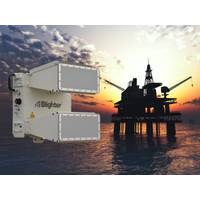
Blighter's Radars to Protect Oil Platforms Offshore W. Africa
UK-based designer and manufacturer of electronic-scanning radars and surveillance solutions Blighter Surveillance System has said it has won a contract to provide its C400 series onshore and offshore installation security radars to protect a cluster of offshore oil platforms and an onshore refinery in West Africa.Without sharing details on the client(s), Blighersaid it had been selected to provide four C400 series e-scanning radars to provide advanced threat detection for an array of oil platforms and a refinery in West Africa, comprising three offshore platforms and an onshore refinery. The
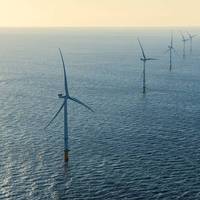
Alfa Laval's Pumping Systems to Support Seagreen Wind Farm Installation
Vestas Offshore Wind.Framo pumping systems will be used in a so-called suction bucket technology in the installation of Seagreen. Framo pumping systems' suction (vacuum) technology will secure and safely anchor the wind turbine platforms to the seabed. The technology has been used to secure offshore oil platforms since the 1990s."This second order for our Framo pumping systems used in suction bucket foundations to wind farms is an important milestone for us as it cements our position in this application and takes our long-proven and validated technology from offshore oil platforms to renewable

Researchers Find Mysterious Seafloor Holes
. Image: © 2019 MBARISeafloor pockmarks have been found elsewhere around the world, and have been associated with releases of methane gas or other fluids from the seafloor. Such methane releases could potentially cause the seafloor to be unstable, which could pose risks for structures such as offshore oil platforms or wind turbines. However MBARI researchers found no evidence of methane in the sediment or seawater in this region. In fact, sonar data showing layers of seafloor sediments suggest that these pockmarks have been inactive for the last 50,000 years.In contrast to the pockmarks, the micro-depr
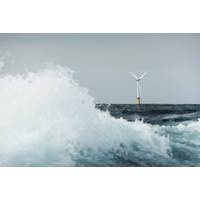
New Floating Wind Center Launched
MEECE activity and, working with our university partners, we will be driving synergies across wind, wave and tidal to accelerate growth across these key components of offshore renewables. Eight initial projects will kick-start the Center's activities. These include:•Powering Offshore Oil Platforms Using Floating Offshore Wind Turbines•Hybrid Bottom Fixed/Floating Offshore Wind Sites•Grid Connection for Scottish Offshore Wind / Off Grid opportunities including H2•Floating Substructures for Fabrication in Scotland•Mapping Scotland’s Floating Offshore Wind Supply
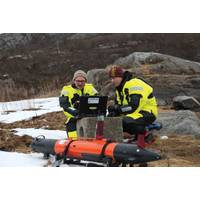
The “Disruption” in AUV Trends
the software and electronics of the smaller, proven, multi-role REMUS 100, the larger REMUS is sure to impress a U.S. Navy contemplating missions as mind-blowing as patrolling transatlantic cables; knocking out seabed listening posts or hardening vital national infrastructure like harbors and offshore oil platforms. Mission possibilities, especially recce, are as boundless as the imagination.Yet, despite the financial clout of Kongsberg Maritime and its worldwide researcher ties, the pioneering ISE, with its scalable units, sees itself as a credible rival even on contracts for large, deep-diving AUVs:
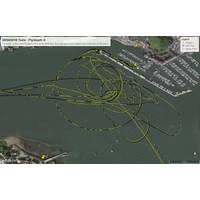
Project to Enable Autonomous Navigation in Denied Environments
Global Positioning System (GPS) data.Trials later this year will to incorporate water track velocity data, using Sonardyne instruments, to further aid the INS positioning. Guidance Marine will also deploy its recently launched SceneScan product, which maps surface features of structures, such as offshore oil platforms, processes the point cloud data and applies simultaneous localisation and mapping (SLAM) techniques to provide relative position data – further expanding autonomous navigation capability. “By proving and demonstrating these technologies, we will enable autonomous vessels

Diving Deep for Conservation
;s thesis advisory panel. “The Rigs-to-Reefs program’s goal is to save industry money, while at the same time having them share the savings with environmental groups. It’s a win-win for the two factions, but an even bigger win for the organisms that have made these underwater offshore oil platforms their homes, as they will, hopefully maintain the deeper parts of these structures.” The future looks bright for the ladies of Blue Latitudes, and they already have plans to expand their expertise to international waters. They have an expedition planned in March 2017 to Malaysia
TE Debuts Subsea CiA LVDT Position Transmitter Featuring CANopen Interface
. Macro Sensors SSBR-937 Series CANBus LVDT Position Transmitter can be used in a variety of subsea measurement systems, including elongation measurement as part of long-term finite element analysis of pipelines, derricks, moorings, choke valves and other critical high-stress members on offshore oil platforms that must be constantly monitored to ensure ongoing drilling platform stability. The position sensor also can measure the extension of structural members of oil platforms to a fraction of a microstrain. To ensure oil platforms don’t shift, movement is measured to less than 2mm.
Macro Sensors Unveil Offshore LVDT Linear Position Sensors
, Macro Sensors Offshore LVDT Linear Position Sensors are quickly becoming the preferred technology in marine and offshore applications, especially for elongation measurement as part of long-term finite element analysis of pipelines, derricks, moorings and other critical high-stress members on offshore oil platforms that must be constantly monitored to ensure ongoing drilling platform stability. In addition to providing measurement from micro inches to two feet with excellent repeatability and precision, Macro Sensors Offshore LVDT Linear Position Sensors are built to operate for at least twenty years




 December 2025
December 2025





